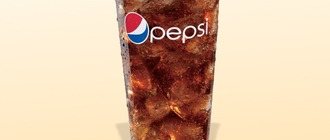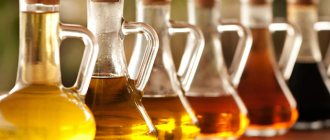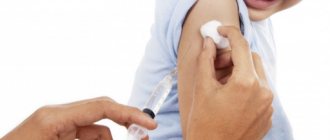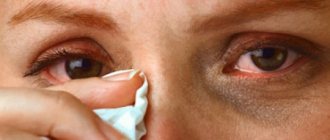Peach is better for cleansing the skin
Everyone knows about the benefits of eating fruits, as they contain a large amount of vitamins, fiber, easily digestible sugars, and essential amino acids. But almost all fruits can cause an allergic reaction. In this article we will look at allergies to peaches, apricots and nectarines. Since they are close relatives, allergies often occur to all three fruits at once and have the same symptoms and treatment.
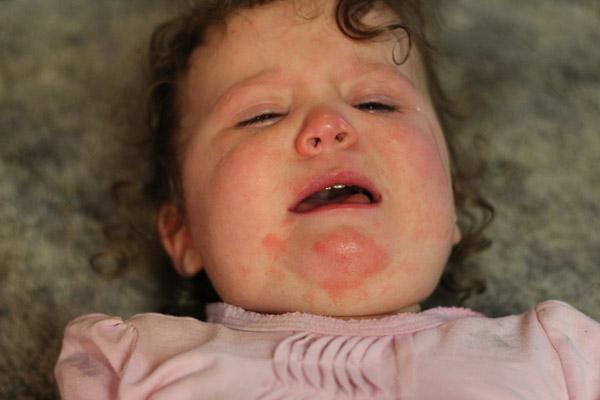
Redness of the skin during an allergy to apricots
general characteristics
Allergies to peaches, nectarines and apricots occur quite often , and children are most susceptible to this phenomenon.
That is why it is not recommended to give these products to a child prone to diathesis and dermatitis until he reaches the age of 1 year .
And even if the child has not previously experienced any allergic manifestations, it is still not recommended to give him peaches and other similar fruits until 6 months.
Peach, nectarine, and apricot contain a large number of different elements, both useful and not so useful. In particular, peach and other similar fruits are rich in allergen protein , the consumption of which causes an allergic reaction in the body.
Manifestation of allergies in children
An allergy to peach in a child most often manifests itself as a result of a hereditary factor. Therefore, young parents need to find out about the presence of possible negative reactions in their closest relatives. If such intolerance is present, then there is a high probability that it will manifest itself in the baby.

Food allergy in a child, manifestations on the face
Peach is one of the strongest allergenic foods. Pediatricians prohibit feeding children under 1 year of age complementary foods with this fruit. After reaching the age of 12 months, complementary foods with peach can be introduced, but this is done gradually in minimal portions until the age of 3 years. From 3 to 7 years old, the baby is allowed to feed peach, but only in peeled form, after removing the skin. Sometimes doctors allow you to give juices for six months, but in small doses - it is advisable to start with a quarter of a teaspoon.
An allergy to peach is quite insidious - it can appear only after some time. Therefore, after introducing dishes with peach into the diet, it is necessary to carefully monitor the baby’s condition and avoid adding other new products to the menu. In children, allergies occur in the form of swelling in the facial area, on the lips, as well as in the form of hives and rashes. Possible swelling of the larynx, rashes on the body, itching. In severe cases, anaphylactic shock .
Can intolerance occur?
Of course, peaches, nectarines, and apricots are highly allergenic foods.
Most often, a child develops a food allergy, however, an allergic reaction can also be caused by the pollen of these plants during their flowering period (if the child comes into direct contact with it).
For an allergic child, not only the fruits themselves are dangerous, but also the juice obtained from them. Moreover, we are talking not only about freshly squeezed juices prepared at home, but also about factory-produced products.
The same applies to fruit puree made from peach, apricot, and nectarine, used as complementary foods. It is not recommended to give such products to a child under 6 months of age, even if the baby has not previously experienced any manifestations of an allergic reaction.
If a child is breastfed, the risk of developing allergies is somewhat reduced, since the immune system of such children is stronger than that of those who are fed formula. But there is still a danger for the baby, so it’s better not to take risks.
Diagnostics
The patient should know the main signs of an allergic reaction to peaches. This will allow you to promptly stop consuming the allergen and eliminate other contacts with it, as well as seek help from specialists. When making a diagnosis, the doctor determines the specific history of the disease, conducts a comparative analysis of the products included in the diet, and prescribes a set of laboratory tests.
Allergen testing can be done in several ways:
- A laboratory blood test to determine the type of protein present in the body. It can provoke allergic changes.
- Skin allergy test. During this study, scrapings from the skin are collected, followed by examination. This method makes it possible to specify the active allergen and determine effective treatments.
- Test of provocative action. It is carried out when the origin of the allergic reaction is unclear or the signs of the disease are insufficiently expressed.
Causes and risk factors
The main reason for the development of an allergic reaction is considered to be the consumption of these products. In this case, the child develops a food allergy. Moreover, not only peaches themselves (nectarines, apricots) are dangerous, but also:
- dried fruits prepared from them;
- thermally processed products in the form of jam, jam, canned fruit);
- juices and compotes;
- oil obtained from fruit seeds;
- pollen and leaves of the peach (apricot or nectarine) tree.
Why do allergies to these foods and dishes develop? The causes of an inadequate immune system response are:
- Increased sensitivity of the body to the allergen protein.
- Immunity disorders.
- An allergic reaction can also occur when consuming preservatives included in store-bought peach products (jams, canned fruits).
- Fruits imported into our country are treated with special reagents to ensure their greater safety. These reagents can also cause allergies.
- In especially severe cases, an allergic reaction occurs in a child even when he just smells the aroma of the fruit.
increase the risk of developing allergies:
- genetic predisposition;
- hormonal disruptions in the body (for example, during puberty in adolescents, or in the presence of endocrine diseases).
Occupational hazards
If you come into contact with a peach for a long period of time without eating it, you can provoke the development of occupational asthma or rhinitis. This can happen to workers in fruit shops, when working in warehouses, when growing peach trees and transporting harvested fruits. In such cases, there is a high probability of manifestations of urticaria. Subsequently, there are risks of developing the disease in the form of food allergies to a variety of fruits and vegetables. This occurs due to inhalation of a protein that is a lipid carrier. It is present in the fluff of the fruit.
What is an allergen?
Peach and other similar fruits contain a number of irritating substances , among which are:
- Homologue protein of Beeceae. Peach contains it in fairly small doses and is easily broken down during heat treatment of the product.
- Thaumatin is an identical protein.
- Protein is a lipid carrier that is considered a major allergen. Its main quantity is contained in the peel of the fruit.
- Profilin contained in pollen of fruit trees.
- Antibacterial peptide.
- Beta glucanase.
Why are people allergic to peaches?
However, not everyone benefits from peaches; unfortunately, they are contraindicated for allergy sufferers. Fruit peels contain substances that cause an attack of the disease. Most often, the body's reaction to peaches occurs in children. In addition, an allergy attack can develop in patients with hay fever.
In order to make sure that it is peaches that cause allergies, you need to see a doctor and get tested.
Based on the test results, the doctor will determine the type of allergen.
In addition, there are symptoms that are very characteristic of this disease. These include:
In case of severe complications, swelling should be alerted to:
These symptoms in a child are considered dangerous because they may precede angioedema. If there are allergy sufferers in the family, then you should not give peaches to a child under one year of age. In the event that complementary foods are introduced that contain this fruit, then you need to start with a minimum portion.
Cross shape
Peaches and other similar fruits are highly cross-reactive.
In particular, a child prone to an allergy to peaches also has an inadequate reaction to birch and hazel pollen, as well as to some food products, such as fruits (cherries, apples, pears, plums, grapes), vegetables (cabbage, lettuce) , tomatoes), nuts, cereals (most often barley), melons.
Prevention methods
It is important to buy fruit from a trusted seller. It is better if the peaches were grown in natural conditions and were not treated with pesticides and other chemicals. It is also important to peel the fruit and not eat more than 2-3 medium-sized fruits per day.
It is strictly contraindicated to eat peaches not only if you are allergic to the fruit itself, but also with such diagnoses as ulcers and gastritis, diabetes mellitus and irritable bowel syndrome.
An allergic reaction to peaches is expressed in two types: food and contact (with sensitivity to pollen). The most common food route of allergy development is that peaches are identified as an allergen for the human body.
Allergies cannot be predicted; they appear completely suddenly and are manifested by various symptoms. For some, orange can be a strong allergen, for others milk, but recently the number of patients suffering from hypersensitivity to peaches has increased.
An allergic reaction to peaches occurs due to the high number of antigens contained in this fruit. Antigens contained in the peel are most active, so most often allergy sufferers react to the top layer of fruit. In addition to a reaction to the fruit itself, increased sensitivity to the presence of birch pollen is possible. Sometimes there is an allergy to latex.
Inside the juicy fruit there is a huge amount of different acids necessary for the human body. In addition, peach contains a lot of iron, phosphorus, potassium, zinc, copper, manganese, selenium, and magnesium. The complex of vitamins is represented by carotene and vitamins of groups B, C, PP, K, E. In addition, it contains essential oil with pectins. Peach pits are rich in amygdalin and almond oil.
Eating peaches helps improve digestive function. This reaction occurs due to the large amount of soluble fiber, which activates processes in the gastrointestinal tract. In addition, plant fibers suppress putrefactive processes during digestion.
This fruit is high in potassium, which has a positive effect on the cardiovascular system by nourishing the heart muscle. The presence of magnesium calms the nervous system, mitigating the negative effects of stressful situations in the body.
Symptoms and signs
An allergic reaction to peaches and other similar fruits has different manifestations and varying degrees of severity.
The main signs of an allergic reaction include:
- Redness of the skin, the appearance of various types of rashes, accompanied by swelling of the skin and severe itching and burning.
- Nasal congestion, copious discharge of viscous clear fluid from the nasal cavity, frequent sneezing.
- Swelling of the mucous membranes (mouth, nasal cavity, eyes, upper respiratory tract).
- The appearance of a dry cough in which no sputum is produced. The cough has a paroxysmal form.
- Difficulty breathing, shortness of breath, presence of whistles and noises when inhaling.
- Swelling of the eyelids, redness of the eyes, profuse lacrimation.
- Disorders of the gastrointestinal tract, manifested in the form of pain in the abdomen, stool disorders (when diarrhea alternates with constipation), nausea, vomiting.
- Sudden changes in blood pressure levels.
Symptoms of an allergy to peaches
It is very difficult to diagnose because it is similar to the body's basic food response. But there are some points worth paying attention to:
- Slight tingling and slight itching in the mouth.
- The appearance of urticaria.
- Swelling of the face, tongue, larynx.
- Blueness in the nose and upper lip.
- Painful sensations in the navel and abdomen.
- Mild or severe dizziness.
- Speech problems.
- Diarrhea, nausea or vomiting.
If several of these symptoms are observed and their rapid increase can cause anaphylactic shock , during which the sick person’s heart begins to beat strongly and consciousness becomes confused. He may end up fainting. If he does not get help in time, he may die.
Treatment
Treatment of an allergy to peaches consists, first of all, in eliminating the child’s contact with the irritant substance, which is not only the fruit itself, but also many other foods, as well as pollen of some plants .
The therapy is complex, that is, treatment does not only involve taking medications. A prerequisite is adherence to a hypoallergenic diet. Traditional medicine recipes can also be used as auxiliary methods of therapy.
Medications
To eliminate the symptoms of the disease, the child is prescribed the following medications:
- Antihistamines . Today, products of 1st, 2nd and 3rd generations are known. For young children, 3rd generation drugs are most suitable, such as Erius, Loratadine.
- Enzyme preparations to eliminate problems in the digestive system.
- Sorbents for removing toxins.
- Symptomatic remedies (drops, sprays) to eliminate eye manifestations or nasal congestion.
- Topical products to eliminate skin rashes (this can be antibiotic ointments if there is a risk of infection, or hormonal creams if the child has severe skin damage).
- Preparations to strengthen the immune system (for example, vitamin complexes suitable for children of different ages).
Folk recipes
In the fight against unpleasant manifestations of allergies to peaches and other fruits, time-tested traditional medicine will help, such as:
- Mumiyo . 1 gr. the product is diluted in 1 liter. warm water or milk. The product is given to the child 50 grams. in between feedings. The resulting solution is also wiped over the affected areas of the skin. This allows you to reduce the number of rashes, relieve itching, and soothe the skin.
- The shell of 1 egg is thoroughly washed, dried, and ground in a coffee grinder. In 1 tsp. crushed raw materials, add a few drops of lemon juice (if the child is not allergic to it), give to the baby once a day.
Diet
If you are allergic to peaches, nectarines, or apricots, it is necessary to adjust the child’s daily diet .
Not only these products are removed from the menu, but also those that can also trigger allergies.
These are fruits and berries, bright colors, nuts, cereals (barley), nuts, some vegetables (tomatoes, green salad, white cabbage).
other methods
If the allergic reaction in a child is minor, a course of immunotherapy is indicated.
During the procedure, the child is given a therapeutic (minor) dose of the allergen , which allows the immune system to “get used” to its presence in the body.
If a child experiences severe allergy attacks even after minor contact with an allergen (for example, if symptoms appear when the child just smells the aroma of a fruit), this treatment method cannot be used.
Prevention and regular therapy
If you are prone to allergies, you must follow a special diet and reconsider your lifestyle. This will reduce the number and intensity of attacks. Regarding nutrition, it is important to provide the patient with a hypoallergenic but balanced diet.

It is necessary to exclude all foods that can trigger an attack. These are bright vegetables and fruits with a pronounced sour taste, fish, honey, nuts. A complete list of prohibited products is developed by a doctor on an individual basis. It is recommended to consume boiled, baked, or stewed dishes, since allergies have a negative effect on the gastrointestinal tract.
Important: You need to maintain a special lifestyle, provide the body with moderate but regular physical activity. As often as possible, it is necessary to do wet cleaning in the living room, remove from the room all objects that can accumulate dust.
For mild symptoms of peach allergy in adults and children, a course of immunotherapy is prescribed. During the procedures, a therapeutic dose of the allergen is introduced into the body, as a result of which the immune system adapts and gets used to its content.

